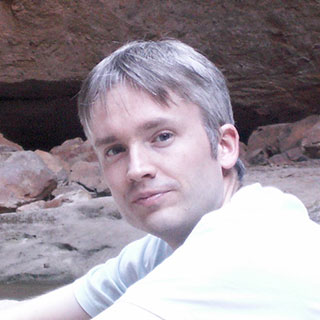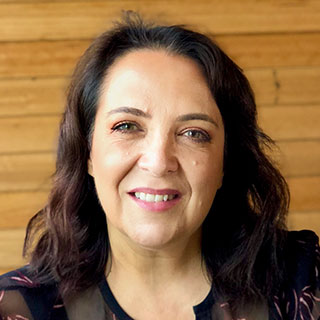Section 1: Biogeography ⟩ Module 2:
What is biogeography?
The second module within Section 1 focuses on developing student understanding of what biogeography is and how it can be used to reconstruct an organism’s evolutionary history and its impact on human communities. This module should take one or two lessons (1-2 hours) to be completed
Summary
VCE Biology (2017-2021)
Unit 4, Area of Study 1, Outcome 1, VCE Biology Study Design
Key knowledge
Changes in biodiversity over time
- Evidence of biological change over time including from palaeontology (the fossil record, the relative and absolute dating of fossils, types of fossils and steps in fossilisation), biogeography, developmental biology and structural morphology
- Patterns of biological change over geological time including divergent evolution, convergent evolution and mass extinctions.
With a focus on:
- Biogeography as evidence for evolution
Duration

Student learning outcomes
On completion of this module, students will:
- Explain what biogeography is
- List the main methods for the analysis of fossil records
- Know how biogeography can be used to explain modern problems
- Apply their understanding of biogeography in the context of current research
Teacher background information
Module description
This section introduces biogeography as one of the types of evidence for evolution. Biogeography is currently used to investigate conservation and phylogenetic issues, especially related to climate change. Researchers might ask, for example, “What is the impact of the rise of temperature in the oceans on the distribution of corals in the Great Barrier Reef?” or “What are the key species and/or key geographical characteristics that help buffer the effects of climate change?” Both these questions have direct impact on conservation planning that may help us preserve vulnerable environments from climate change.
In conjunction with phylogenetic studies and palaeontology, biogeography can be a tool for reconstructing the evolutionary history of organisms and help explain how they came to be where they are. It is important to note that, since it is impossible to rewind historical processes, biogeographic scenarios have to be inferred from the data available, which are at times contradicting. Because of that, such scenarios are constructed through probability studies, and are constantly changing as new data and improved research tools are made available.
In this module, students will apply their knowledge of biogeography and ethnobotany to explain how Aloe vera acquired its economic popularity, engaging with a unique resource inspired by current research in biogeography. Students will also have the opportunity to learn from videos where scientist Matthew Symonds discusses about research in biogeography and what it is like to be a researcher in the field. This lesson focuses on the applicability of biogeography as a field of research.
Additional Information
Article
Bias in the fossil record
An article listing some of the problems with fossil analysis, pointing out some of the possible biases that may come from it. This may be interesting to consider with your students when talking about the validity of data and why major hypotheses of evolutionary history are constantly changing.
Article
Dating Rocks and Fossils Using Geologic Methods
A very instructive explanation of how palaeontologists date fossils, with a description of the main methods and how they work. From this webpage you will be able to find good images that may help you in your explanation, and a glossary of words relevant to the topic.
Article
The Formation of Fossils (Science Views, 2008)
An article explaining the main processes from which fossils can be created.
Video
Evolution: It's a Thing - Crash Course Biology #20 (11:43)
This video mentions some of the evidence for evolution, including biogeography. Using examples of contemporary research and others involving Australia, this could be a good source of ideas when engaging the students with the subject.
Article
Explainer: what is biogeography? (The Conversation, 2012)
This news article explains the concept of biogeography by making comparisons with our daily lives. Using articles from the media helps show students the relevance of the topic and may enable them to start seeing it as a contemporary subject in contrast to its historical beginnings. Checking what is said in the media is very relevant for teachers who want to address students’ daily lives and the implications of science in our society.
Article
Biogeography: Species Distribution (ThoughtCo., 2017)
Yet another news article explaining about biogeography, this time exploring its three main branches: historical biogeography, ecological biogeography and conservation biogeography. At the end of the article you can also find a video about humans’ responsibility in the extinction of several species, which you may want to use in your classroom for a focus on sustainability.
Website
Biogeography (National Education Association [NEA], 2017)
A website that compiles resources and lesson plans for teaching biogeography, designed by fellow teachers. It also contains a series of instructive videos to help better understand this topic.
Article
Conservation paleobiogeography: the past, present and future of species distributions (IBS special issue, 2014) (524KB pdf)
A short scientific article that provides an overview about paleobiogeography and its implications for conservation-related issues.
Teaching sequence
Lesson 1 Fossil records

Student knowledge/ skills outcome
Students will be able to:
- explain what biogeography is
- list the main methods for the analysis of fossil records
Prior Knowledge
- Previous module completed
Activities
Background and resources
These interviews aim at introducing the life of a researcher to the students as well as engaging them in the study of biogeography, including fossil analysis.
Biointeractive
Fossil Evidence and Evolution
An interactive activity where students are challenged to place seven different fossils in the correct era. It can be used to engage students and articulate fossils as evidence of evolution. It can be done individually or in small groups.
Article
Accuracy of Fossils and Dating Methods
An article providing a summary of dating methods. This could be a good introduction to the topic of dating methods, as students can independently get informed prior to the whole-class discussion that follows.
Article
Anthropology is far from licking the problem of fossil ages
This article discusses some of the limitations of fossil-dating in light of a controversial hominid fossil found in 2015. After briefly becoming aware of major dating methods, students can contemplate some difficulties in palaeontology. A whole-class discussion is suggested to comment on the challenges and validity of palaeontological discoveries.
Activity 1
Fossil Record of Stickleback Evolution (2:34 min)
https://www.hhmi.org/biointeractive/fossil-record-stickleback-evolution
This animated video shows evidence of the evolution of the stickleback fish as observed by fossil records. It includes a graph showing differences in the fish pelvis, which can be interpreted in a whole class discussion.
Evolving switches, evolving bodies (14:56 min)
http://media.hhmi.org/biointeractive/interactivevideo/sticklebackquiz/
Still on the stickleback fish, this interactive video displays quizzes to test student understanding along the way, encouraging students to pay attention and giving opportunities for teachers to promote a whole-class discussion on the subject in three distinct parts of the video. This activity is highly recommended if there is time available.
Activity 2
Date a Rock – An Age-Dating Simulation
http://www.indiana.edu/~ensiweb/lessons/date.les.html
This 45-min activity is a great complement to teaching about dating fossils in case you have the time to teach it. It offers whole orientations from the engagement phase to how to assess student knowledge. It focuses on the process of counting the number of half-lives of radioisotopes to determine the age of a sample.
Lesson 2 Biogeography and evolutionary biology

Student knowledge/ skills outcome
Students will be able to:
- understand how biogeography can be used to explain modern problems
- apply understanding of biogeography in the context of current research
Prior Knowledge
- Previous module completed
Activities
Engaging students: As a strategy to inspire student interest, it is suggested that you bring an Aloe vera plant along with various products made with it. In a circle, promote a whole-class discussion about the benefits of the plant, writing a list of benefits on the whiteboard. This will serve to both acknowledge and value student previous knowledge and to present a link between science and students’ daily lives. Share the marketing article below and ask questions related to Aloe products.
Background and resources
Article
Why is Aloe Vera so Popular?
An article that advertises Aloe vera products, probably overemphasizing the health benefits promoted by the plant. In the article, the seller guarantees that Aloe Barbadensis Miller is the best species in the Aloe genus for commercial purposes. But is that true? What made the Aloe family so popular in the first place? And is the variety that we explore for economical purposes actually related to biochemical studies done in different members of the family?
Activity 1
Recent research on Aloe vera showing application of ethnobotany, biogeography and phylogenetic studies
Note: For this activity, students will need to have a basic understanding of clades and monophyletic groups. This is a good introduction to phylogenetic trees, the theme of the next module. It is suggested that you briefly state that a clade refers to a group of organisms that descend from the same common ancestor.
- Student handout: student-handout-recent-research-on-aloe-vera.pdf (1MB pdf)
This activity was designed to assist with learning about biogeography and ethnobotany using recent research in the field. It starts with a brief explanation of divergent and convergent evolution to engage students, and it follows with the case of Aloe vera, where students will analyse its biogeographical scenario and make inferences from the results of the study. They will then attempt to answer the research question: Why is Aloe vera the most commercially available species of the genus Aloe? Students will be given a handout with the activity and the proposed exercises. It should take them 20-30 minutes to complete the activity. Teachers should guide students through new concepts, possibly keeping a glossary on the whiteboard, and promote a whole-class discussion on the main conclusions of the research.
Supporting resources
Video
Convergent and Divergent Evolution (6:27)
This video can be used to support student understanding on divergent and convergent evolution, where a Biology teacher explains the topic using Australian examples. Start playing from 3:28 minutes.
Video (6:07)
Matthew Symonds (Deakin University)
In this interview, Dr. Symonds discusses the uses of indigenous knowledge (IK) in studies of phylogeny, and more specifically describes what ethnobotany is. By citing some works in which IK was used, he celebrates Aboriginal knowledge and acknowledges it. This will serve to wrap up student understanding on the previous activity and consolidate knowledge. It may also be an opportunity to introduce aspects of human evolution, also using the article discussed in Part 1 of this module.
 Contemporary VCE Biology
Contemporary VCE Biology



